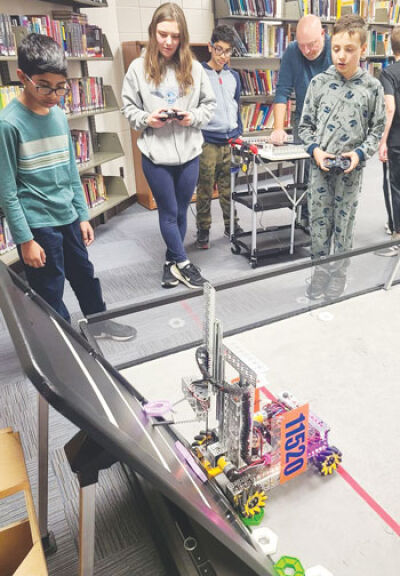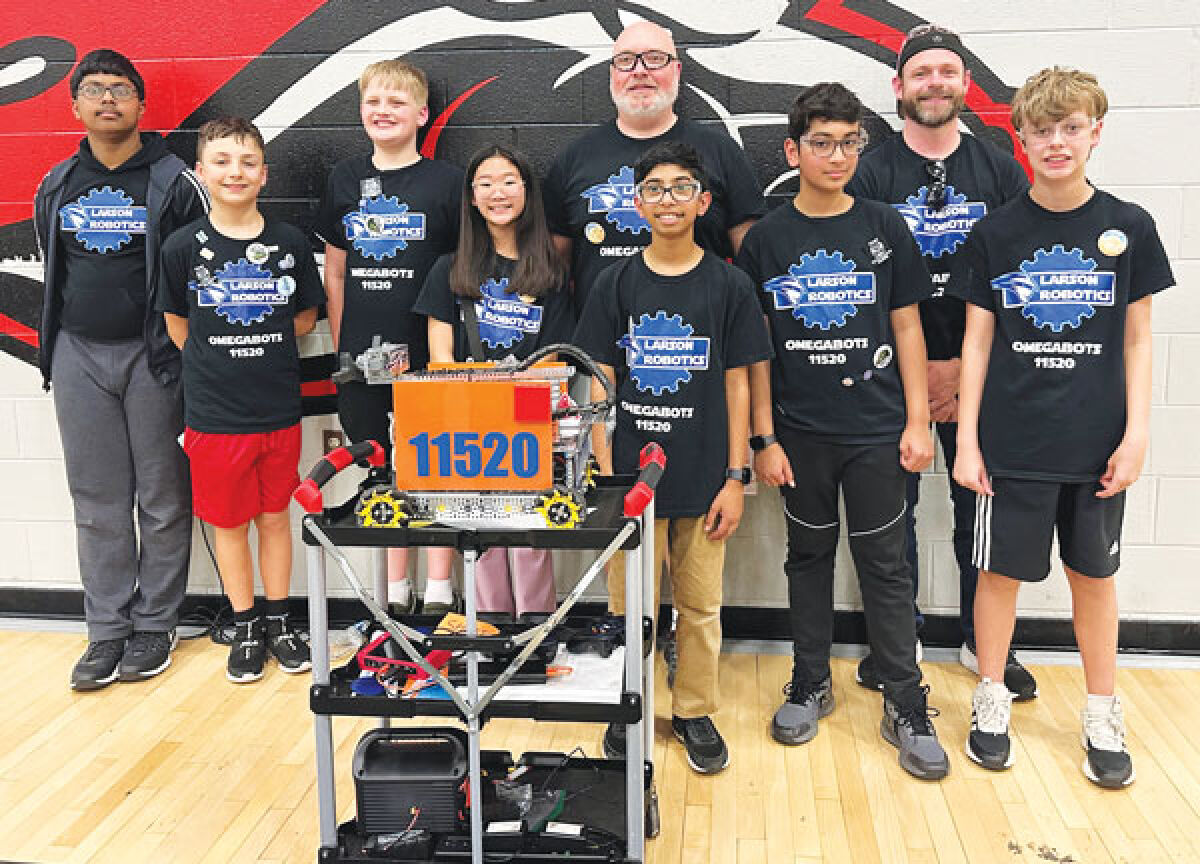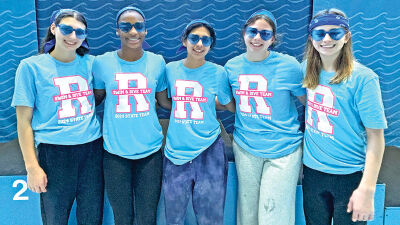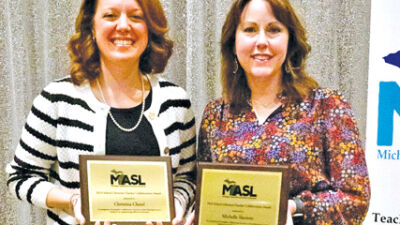
Members of the Omegabots robotics team at Larson Middle School work together on various tasks to prepare for robotics competitions.
Photo provided by Jeff Blakely
TROY — Middle schoolers with an interest in robotics can work together and build their skills through the Omegabots robotics team at Larson Middle School.
The Omegabots, formed in 2016, are one of the many robotics programs available through the Troy School District. Most of the programs are led and supported by parent volunteers.
“As the students graduate from Larson, they would ‘pass the torch’ to the next generation of students, and their parents would help support the team,” current Omegabots coach Jeff Blakely said in an email. “In 2022 I took over as head coach for the Omegabots. Prior to that I was a coach and/or mentor for various teams at Larson Middle School since 2020.”
Prior to his involvement with the robotics teams at Larson Middle School, Blakely worked with students at Hill Elementary School. In 2017, Blakely, Steve Smitka and Matt Sackrison founded a set of robotics teams under the VexIQ program, and they formed the Troy Robotics Foundation nonprofit in 2019 to help fund students.
Blakely said he believes that not everyone can participate in team sports but that everyone can participate in robotics.
“If robotics existed when I was a kid, I would have been all over it, because sports ‘wasn’t my thing’ either,” he said.
He said that is what compelled him to work with the others to establish a robotics program for kids.
For the 2024-2025 school year, the Omegbots will have around 10 students on the team, with the ideal being between eight and 10.
“Most, if not all students have an interest in robotics or some facet of STEM prior to joining,” he said, noting activities such as programming, building things with their hands, or playing video games — the robots use game controllers. He said that “just about every kid has at least one thing they get excited about.” He said the interest is so strong that the demand exceeds the number of volunteer coaches and mentors.
Nathan Samuel, an Omegabots team member, has been interested in robotics since he was in fifth grade, and it stemmed from his interest in Legos.
“I was always interested in building Legos and participated in Lego League in elementary school,” Samuel said in an email. “I enjoy building things and see how they work. I also like competing with the team.”
In terms of team activities, the tasks can vary as the teams prepare projects for competition.
“In the early stages it’s all about getting familiar with that year’s objectives and designing the various components to perform the tasks necessary to win,” because the game and its challenges change every year, Blakely said. “Once the students have some various designs or concepts, we try to build and test the concepts. Some concepts fail to perform, we document it, and then move on and focus our attention on a new idea until we are all satisfied with the performance of the component. If we need specific parts, we will order them ASAP so that we can complete the build phase.”
For competitions, students prepare through different drills and matches in order to ensure they have all their bases covered leading up to competitions.
“We have each student try different positions on the team until they find their ideal spot,” Blakely said in an email. “Once everyone has established their roles, we vote to make sure everyone agrees that our team is optimized for success. After that we begin doing timed drills, mimicking the competitions” — like a soccer scrimmage, but with robots, he said.
Robotics competitions can go on for a couple days for different teams, depending on how well the teams perform.
“The competition takes a whole day and is highly competitive. There are referees as well as live scoring and commentary,” Samuel said in an email.
He said each team has three or four people running the robot in each round of competition. “There are usually around 36 teams from different schools. You are competing in partnership with teams that you may have never met before. So you have to work with them to develop a strategy.”
The Omegabots usually perform well, and their most recent season has brought some high recognition.
Blakely said that in the regular season, they do about average, but in the spring season they placed first.
As the kids grow older and move on to next stages in their school careers many of them continue to express their interest in robotics.
“I would say at least 2/3 of the kids I’ve mentored over the years stick with it all the way through high school,” Blakely said in an email. “The other 1/3 who stop doing robotics, it usually comes down to a few things such as conflicting activities, lack of space on a team, or general shift in interest as the students mature. Regardless of their interest, they have a 100% chance of using the skills they’ve learned in furthering their career, no matter what direction they decide to go. … I would like to see Troy School District take robotics as seriously as they do football, basketball or soccer. If they do that, they would truly be a ‘City of Tomorrow, Today’ focusing on the engineers, scientists, and programmers of tomorrow, today.”
Samuel said he is interested in learning more about robots and potentially exploring a career within the field.
“I would like to build robots that help people in their daily lives,” Samuel said.
For more information, visit troy.k12.mi.us or visit lmsrobotics.weebly.com.
 Publication select ▼
Publication select ▼


























